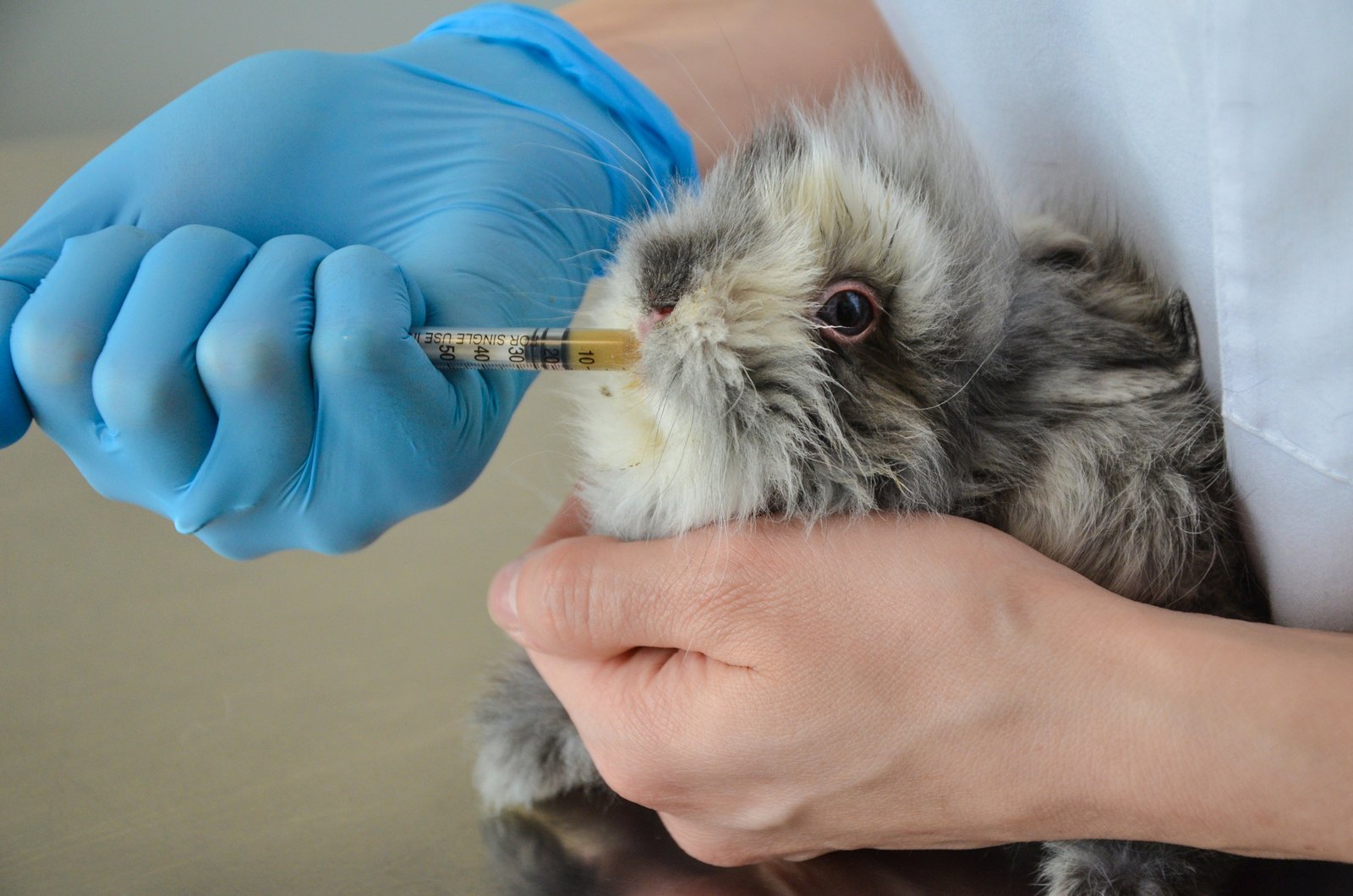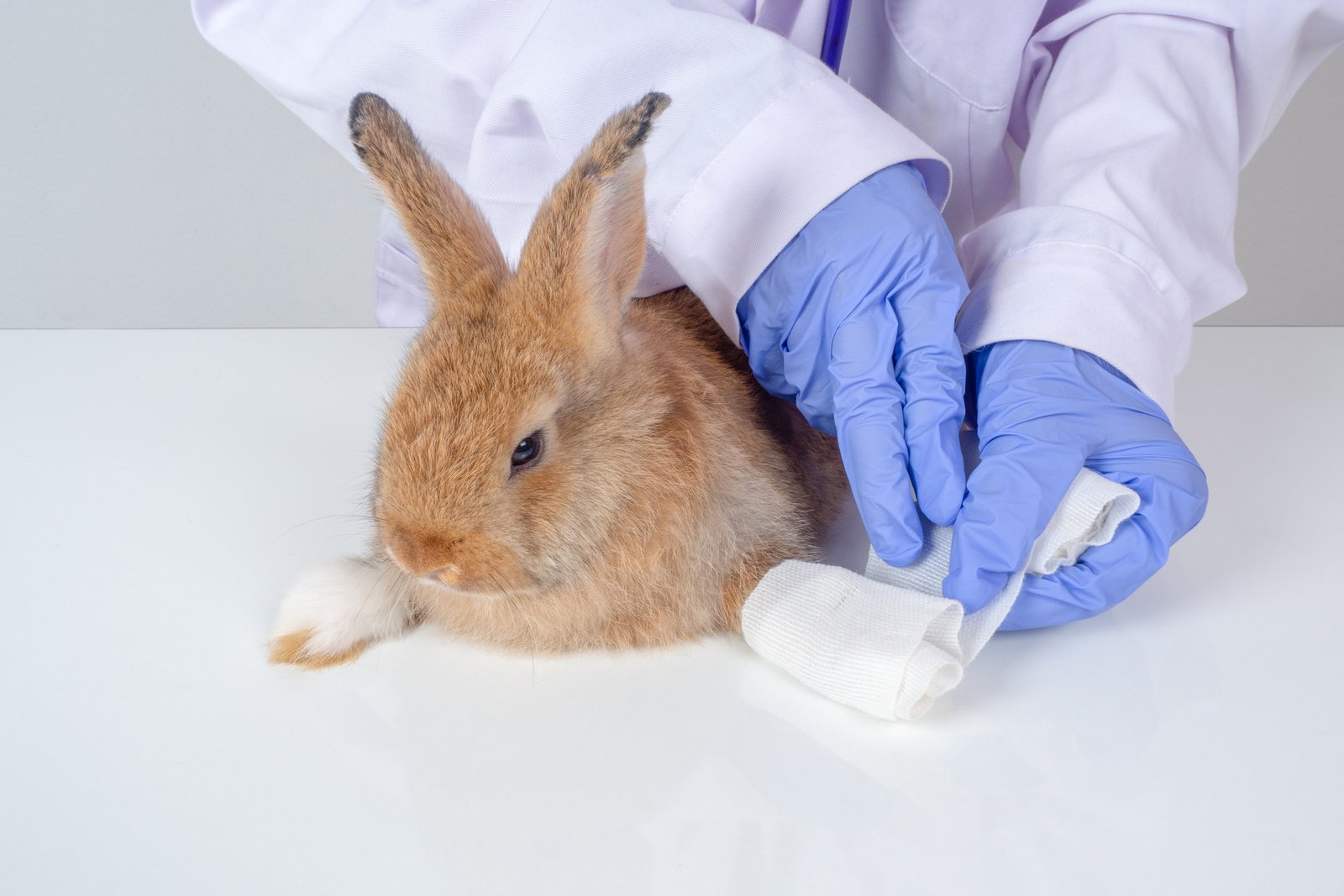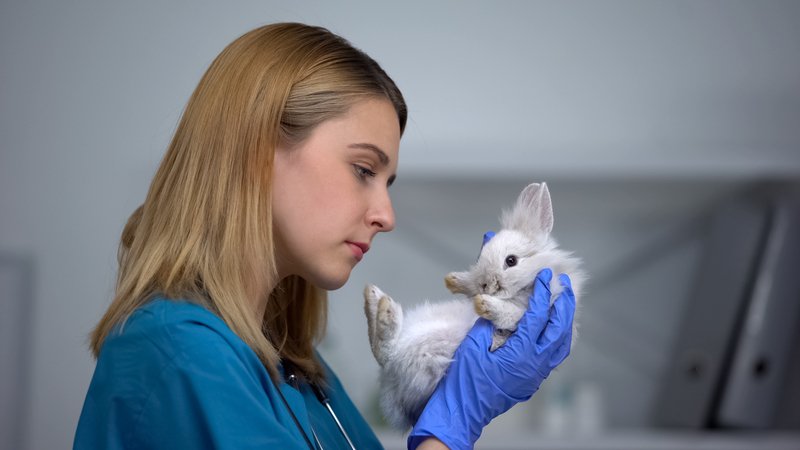A rabbit first aid kit is necessary for your pet. Because of its curiosity, a bunny can be mischievous at times. Hence, it encounters accidents that cause bruises and broken bones. Also, emergencies are inevitable, so you must always be ready. This post lets you know what to keep inside your bunny’s first aid kit.

Benefits of Rabbit First Aid Kit
Bunnies may look like regular pets. However, their fragile bones, sensitive guts, and tender skins need special care. Having a rabbit first aid kit can save your rabbit’s life. You must place the first aid kit where you can easily find it, especially if an emergency occurs. Also, bring it with you if you are traveling with your rabbit.
Remember, the first aid kit is only intended for emergencies only. You should still bring your pet to the vet within 12 to 24 hours. Call the vet immediately if your bunny has difficulty breathing and pale gums. It can be a symptom of poisoning, and giving first-aid may not work. Do the same if your pet has been infested with flystrike.
Ensure that you have complete medicines and equipment. Place them in a kit that is easy to handle and open. In the following sections, you will know what things must be inside your kit. You can purchase them at drugstores and pet stores near you. If you don’t have time, you can also buy online.
Non-Latex Gloves and Hand Sanitizer
If your bunny is bleeding, wear a pair of non-latex gloves before treating its wounds. Your pet may experience an infection if you put your hands on the bleeding area. It is also vital that you wear gloves, especially if your pet has a contagious disease. The gloves will protect you from being infected by the disease.
Besides non-latex gloves, keeping a hand sanitizer is necessary. It is useful when treating your bunny. Aside from that, a hand sanitizer prevents the transfer of pathogens. Ensure that you sanitize your hands before and after you touch a sick pet.

Heating Pad
Rabbits are vulnerable to extreme temperatures. They may also experience hypothermia if exposed to a freezing environment. Aside from that, their temperatures fall whenever they are stressed. Hence, having a heating pad in the rabbit first aid kit is necessary. It is helpful so you can regulate your bunny’s body temperature externally.
Instead of using an electric heating pad, choose a non-chewable one that is safer for your pet. You can put it inside a microwave to heat it, but don’t overheat it. Remember, never put it directly on your bunny’s body. You can place it inside a towel first, or you can put it beside your pet.
Ice Pads
You must also be prepared during hot weather by keeping ice pads inside your fridge. Unlike other household pets, rabbits cannot easily regulate their body temperature. It is because they have few sweat glands. Also, they don’t pant like other pets. Thus, they are prone to heatstroke. It is a condition that can be fatal.
When traveling with your bunny in a car, you must bring ice pads with you. Rabbits are more prone to heat stress during a trip. If you don’t have ice pads, you can also use frozen water bottles as an alternative. It is much safer for your pet since your bunny can chew it. If your bunny shows a sign of heat stress, place the bottle beside it.
Gauze pads and bandages
Gauze pads and bandages are must-haves in your rabbit first aid kit. They help limit bleeding and prevent contamination. Aside from that, bandaging also controls the infection and immobilizes the area. However, you must dress the wounds appropriately to avoid complications. For bandages, choose non-adhesive or self-adhesive ones. These bandages will not stick to your pet’s fur, preventing it from getting hurt. Aside from that, they are easier to apply to wounds. If you are dealing with major cuts, it would be better not to touch them to prevent infection. Go to the vet immediately so he can perform the necessary treatment.

Rehydrating Drink
Water is necessary for your rabbit’s body. As we know, it keeps the bunny hydrated. Moreover, water regulates your pet’s body temperature and improves gut motility. However, a sick bunny may suffer from dehydration. A bunny that fails to drink water within 12 hours may die. If you cannot make your pet drink enough water, you must have a rehydrating drink to help your pet.
Signs that your pet is dehydrated are appetite loss, dry skin, dry eyes, and stick eyes. You may also notice that your pet is inactive and lethargic. Pedialyte and Gatorade are some fluids you can give your pet to keep it hydrated. If your pet doesn’t drink it, you can administer it to them using a syringe or an eyedropper.
Gas Drops
Because of sensitive guts, rabbits are susceptible to digestive issues like stomach gases. Feeding them a lot of cauliflower, cabbage, and kale can result in this condition. The gas prevents the gut from moving, making it difficult for the bunny to pass stool. Giving your pet gas drops can bring relief to your rabbit.
Liquid simethicone is known as “baby gas drops” and effectively removes abdominal gases. For baby bunnies, you can give at least ⅓ of the dropper, while ½ dropper for adult rabbits. It must be provided every four to six hours until your pet experiences relief. But for most bunnies, it only takes 30 to 40 minutes until your pet feels good again.
Towels
You must also keep towels inside the rabbit first aid kit. Rabbits tend to get scared when they are medicated. To calm your pet, cover its body with a towel. It will help your pet feel secure and safe. Thus, applying first aid, such as cleaning wounds or putting bandages on the body, is easier. A frightened rabbit may scratch or bite its owner when handled. It may also suffer from fractures once it kicks its feet immediately.
Besides calming your bunny, a towel is also helpful in preventing your pet from slipping. Place a towel first if you must put your bunny on a table. You can also place it inside your bunny’s carrier to keep your pet warm, especially during a trip in winter.

Syringes
An ill bunny may lose its appetite. Thus, you must administer food to it by feeding it with a syringe. Keep at least one syringe inside your rabbit first aid kit. It would also be helpful if your pet is dehydrated and has to drink water. The vet may also give medication to your pet, and you will need a syringe to administer it to your bunny.
Styptic Powder
Rabbit injuries can be inevitable, especially when cutting your rabbit’s nails. Beneath a nail of a bunny is a vein called a quick. Trimming your pet’s nails too short can make the quick bleed. Instead of panicking, apply a small amount of styptic powder to the bleeding area. Press it on the wound using a gauze pad until it stops bleeding. You must also wash the styptic powder immediately to prevent your pet from ingesting it.
If you don’t have a styptic powder, you can use cornstarch as an alternative. Besides its lower price, it is also much safer for your pet. Before grooming, you must have styptic powder or cornstarch to treat the wound.
Critical Care
Critical care is a powdered formula you must always keep in your rabbit first aid kit. Bunnies that need to be forced-feed are given this formula to nourish them and keep their guts moving. Without proper digestion, your pet may suffer from gastrointestinal stasis. Feeding your bunny is also necessary to have a fast recovery.
The formula comprises timothy hay that can be fed to your pet using a syringe. But you must feed your bunny carefully since it can get stressed by the procedure. If your bunny is already eating, you can administer it to your pet by adding it to your bunny’s pellet. You can also add a squashed banana, so your pet would eat it.
Vet’s Phone Number
Lastly, you should put the vet’s phone number inside your rabbit first aid kit. Accidents may happen anytime, so you must know what number to call. As much as possible, put the number on the kit’s cover. It will save you a lot of time since you won’t have to look for it inside the box, especially if an emergency occurs. Vet offices don’t operate 24 hours. Hence, add the contact information of emergency animal hospitals in your area.
Frequently Asked Questions
What are the things that a rabbit first aid kit must have?
A rabbit first aid kit must have the vet’s phone number. You must also keep the contact numbers of emergency animal hospitals. Aside from that, it must have non-latex gloves and hand sanitizer. You must also put in some heating, ice, and gauze pads. Critical care, gas drops, and styptic powder are also necessary.
Why should I keep a rabbit first aid kit?
A rabbit first aid kit is necessary to prevent your bunny’s condition from worsening. But remember that you must still bring your bunny to the vet so it can be treated appropriately.
What emergencies require first aid?
Some emergencies requiring first aid include heatstroke, a low body temperature, and cuts. You can also give first aid to your pet if it has broken bones, broken nails, and breathing issues.

Conclusion
Keeping a rabbit first aid kit can save your bunny’s life. It should have anything you need, mainly if emergencies occur. By performing first aid on your bunny, you can alleviate the pain it is experiencing. Even after you have treated your bunny, you must still bring it to the vet for examination.



